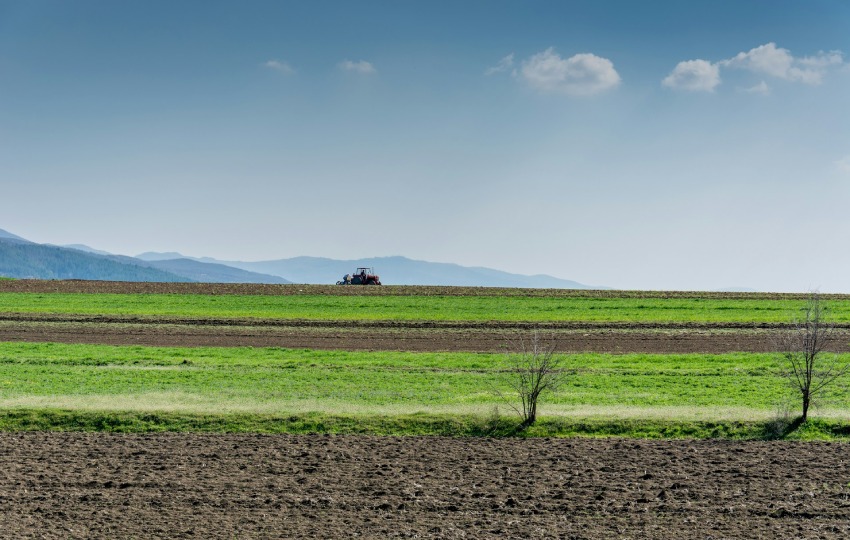In the face of escalating environmental challenges, the agri-food sector is urgently called upon to transition from a traditional linear economy to a circular economy. This paradigm shift is vital for sustainability, promising a future where resources are utilized more efficiently, and waste is significantly reduced. Let’s delve into what this transition entails and the actionable steps SMEs in the agri-food sector can undertake.
Linear vs. Circular Economy: A Crucial Shift
The linear economy, characterized by the “take-make-dispose” model, has long dominated industries, including the agri-food sector. This approach results in a high environmental toll, depleting finite resources and generating waste. Conversely, the circular economy aims for sustainability, emphasizing the principles of reduce, reuse, and recycle. It advocates for products designed for extended use, repairability, and recyclability, thereby minimizing waste and conserving resources.
For the agri-food sector, the shift towards circularity is not just environmentally imperative but also economically beneficial. By adopting circular practices, SMEs can address critical challenges like resource scarcity and food waste head-on.
The Imperative for SMEs
Transitioning to a circular economy offers SMEs in the agri-food sector a pathway to sustainability and economic resilience. This shift is essential for businesses aiming to stay competitive and align with global sustainability targets. By embracing circular principles, SMEs can open up new opportunities for innovation and growth.
4 Pathways to Circular Transition for SMEs
Transitioning to a circular economy involves a multifaceted approach, encompassing assessment and planning, innovation in design and processes, collaboration, and consumer engagement. This expanded strategy ensures that SMEs in the agri-food sector can effectively move towards sustainable practices that benefit both the environment and their business model.
1. Assessment and Planning

This initial step requires a comprehensive evaluation of an SME’s current operational model to identify linear practices that can be converted into circular ones. This might involve conducting a waste audit to understand where resources are being lost or inefficiently used and mapping out the product lifecycle to pinpoint areas for improvement.
The goal is to create a detailed action plan that outlines specific, achievable steps towards circularity, including setting short-term and long-term goals, identifying key performance indicators (KPIs) for sustainability, and establishing a timeline for implementation.
2. Redesigning Products and Processes

Innovation is at the heart of the circular economy. SMEs should focus on redesigning their products and processes to enhance durability, repairability, and recyclability. This can involve adopting modular designs that allow for easy repair or upgrading, selecting materials that can be easily recycled or are from renewable sources, and implementing processes that minimize waste production.
For example, transitioning to biodegradable packaging or implementing a return system for used products can significantly reduce waste. Emphasizing the reduction of waste not only in production but also in the use and end-of-life stages of a product’s lifecycle ensures resources are utilized more efficiently.
3. Collaboration and Partnerships

Achieving a circular economy is not a journey that SMEs should undertake alone. Engaging with other businesses, governmental bodies, NGOs, and the local community can open up new avenues for resource sharing, innovation, and market development. Forming or joining circular supply chains where waste from one process becomes the input for another can create a closed-loop system that significantly reduces waste. Collaborative efforts can also lead to developing shared facilities, such as recycling centres or renewable energy projects, that benefit all parties involved.
4. Consumer Engagement

Consumers play a crucial role in the circular economy. Educating them about the benefits of circular products and encouraging sustainable consumption patterns are essential. This can involve marketing efforts that highlight the environmental and economic benefits of circular products, such as lower costs over the product’s lifecycle or the reduction of waste. Offering incentives for returning or recycling products and engaging consumers through social media or community events can also drive the adoption of sustainable practices. By fostering a culture of sustainability, SMEs can not only enhance their brand reputation but also contribute to a larger shift in consumer behaviour towards circularity.
Each pathway offers SMEs a practical approach to integrating circular economy principles into their operations. By taking these steps, businesses in the agri-food sector can not only reduce their environmental impact but also uncover new opportunities for growth and innovation in an increasingly sustainable and resource-conscious market.
The Pivotal Role of Circular Economy Managers
At the heart of this transformative journey are Circular Economy Managers. These key figures are instrumental in devising and implementing circular strategies within SMEs, ensuring that business practices align with the principles of sustainability. They play a critical role in fostering innovation, efficiency, and circularity throughout the company’s operations.
Interested in learning more about how Circular Economy Managers are driving change in the agri-food sector? Visit CEM for SMEs for insights and resources on embracing circular economy practices.
Conclusion
The journey from a linear to a circular economy in the agri-food sector is an essential stride towards sustainability. It demands dedication, innovation, and collaborative effort. By adopting circular principles, SMEs not only contribute to a more sustainable global food system but also gain a competitive edge in the evolving market landscape. The transition to circularity is not just an environmental necessity; it’s a strategic business move towards a resilient and prosperous future.

